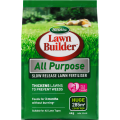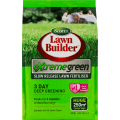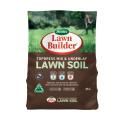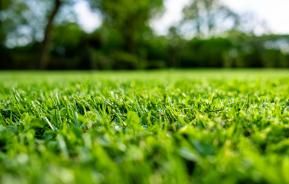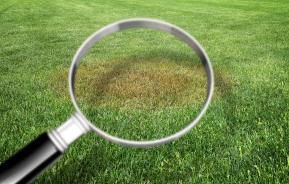When you stand in front of the fertiliser shelf at your local hardware garden centre, you will be faced with a bewildering array of products of different types making all sorts of claims. Finding the lawn fertiliser that suits you and your lawn can be daunting.
To make it easier for you, we’ve put together a simple guide to the different types of granulated or dry fertilisers for lawns.
Lawn fertiliser types
Traditional lawn foods are the most basic and often the cheapest.
Key features:
- Powdered appearance
- High application rates
- Shorter term feeding
- More instant effect
- More frequent applications
Slow Release
More advanced in their nutrient delivery they will feed for up to three months.
Key features:
- Nutrients release slowly and continuously
- No nutrient dump after watering in
- Low application rate
- Three applications per year
When using a quality slow release like Scotts Lawn Builder, a consistent level of growth and greening is achieved across the life of the application with no surge growth and no nutrient run-off.
NPK lawn fertiliser - what's it all about?
The most important thing to remember about fertilisers is that you don’t need a science degree to select the right one.
Someone who does have such a degree has already done the hard work of getting the formulation right for you, with nutrients balanced for your particular needs.
It does, however, help to have an understanding of what all those letters in a fertiliser's NPK ratio mean.
N is for Nitrogen
Nitrogen is the main contributor to quality, lush, green leaf growth. This is why you’ll see most lawn fertilisers have a high N component.
P is for Phosphorus
Phosphorus is the main player in the development of flowers and fruit, so you don’t want too much in lawn food. It also improves root development and disease resistance.
K is for Potassium
Potassium is the overall plant health support nutrient. It promotes growth and vigour, helps plants resist disease and keeps metabolic functions running smoothly.
S is for Sulphur
Sulphur promotes greening - it is one of the primary building blocks of chlorophyll, the pigment that gives plants their green colour. It also helps plants utilise other nutrients.
Fe is for Iron
Iron is used to keep plants green - a lack of it being absorbed by plants causes them to become yellow. Iron is not usually lacking in soils but can become chemically bound up if the soil pH is not between 5 and 6.5 (acidic).




